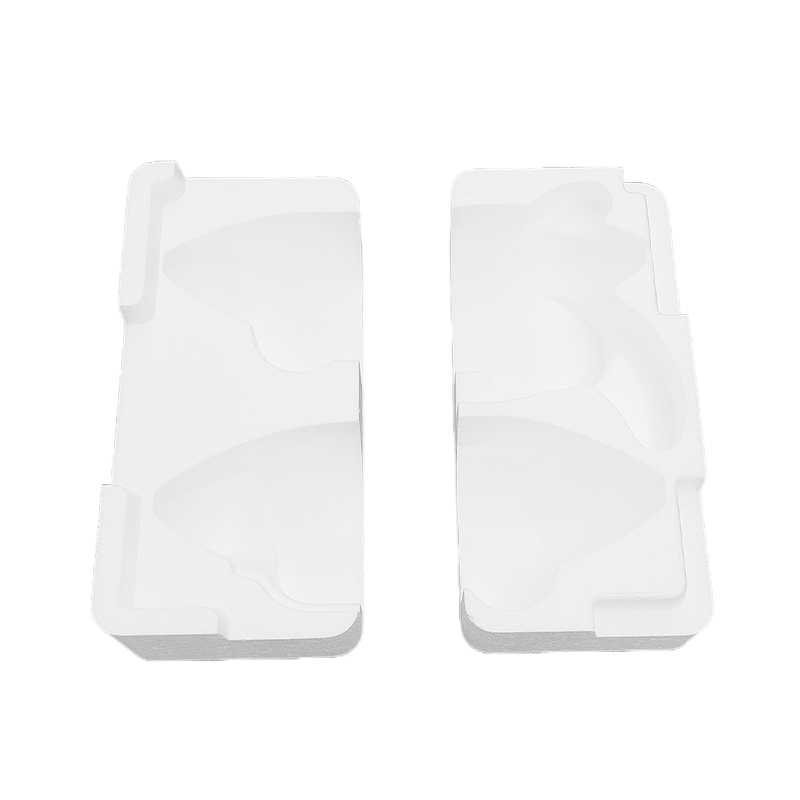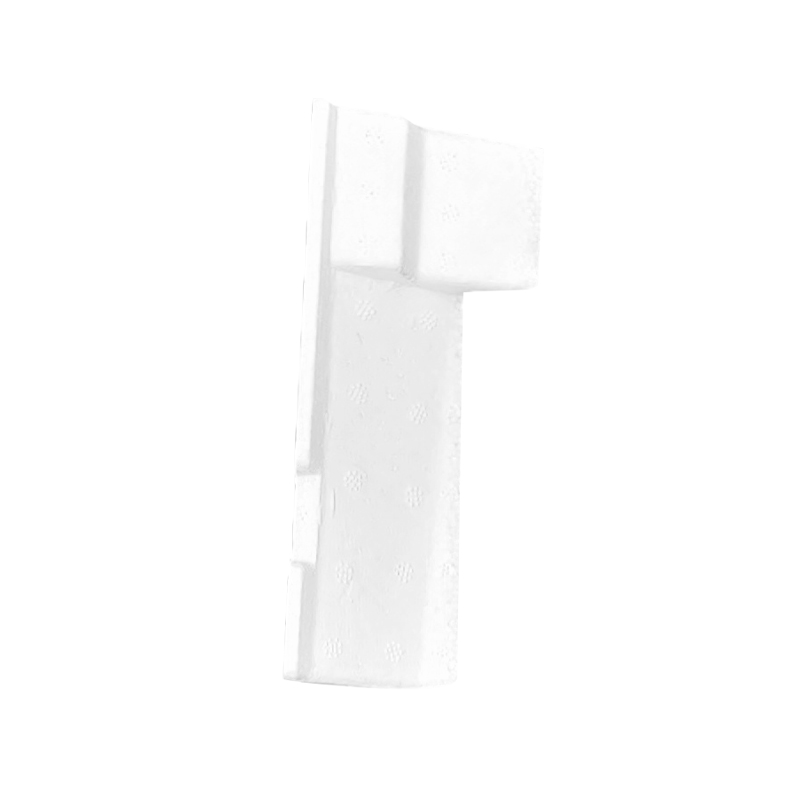Is the lining structure of motor EPS packaging precisely customized to the motor's shape, ensuring a perfect fit and comprehensive cushioning?
Release Time : 2025-10-04
In modern automotive manufacturing, the electric power steering (EPS) motor is the core actuator of the vehicle's steering function. Its performance and reliability are directly related to driving safety and the handling experience. These motors integrate sophisticated electronic control units, high-precision sensors, and micro-motor structures. Internal components are extremely sensitive to vibration, shock, and external stress. Even if the motors are externally intact, displacement, collision, or loosening during transportation or storage can lead to loose connections in internal wiring, magnet displacement, or encoder misalignment, potentially affecting system calibration and operational stability after installation. Therefore, whether the packaging used to protect EPS motors, especially its lining structure, is highly customizable and provides precise protection is crucial to ensuring product quality.
High-quality motor EPS packaging linings are typically made of polymer cushioning materials such as expanded polyethylene (EPE), EVA, or expandable polystyrene (EPS). They are precisely designed and manufactured using a mold-forming process to the motor's exact three-dimensional contours. This customized lining is not a simple, universal groove; instead, it perfectly fits every detail, including the motor housing, connectors, wiring harness outlets, and mounting flanges, creating a custom-made packaging structure. Once the motor is placed, all contact surfaces are evenly stressed, and there's no gap between the housing and the lining, effectively preventing vibration and friction during transportation. This comprehensive fit not only provides physical support but also creates a uniform buffer layer between the motor and the outer casing, distributing external impact forces across the entire contact surface and preventing localized stress concentration and damage.
The structural design of the customized lining fully considers the functional characteristics and weaknesses of the EPS motor. For example, the wiring harness and electrical interface are particularly vulnerable areas. The lining features dedicated independent wire ducts or cavities to naturally bend and secure the wiring harness, preventing loose terminals or insulation damage due to compression, stretching, or twisting. The plug utilizes an enclosed protective structure to prevent foreign objects from entering or impacting the pins, which could cause deformation. For protruding components on the motor body, such as heat sinks, sensor probes, or encoder windows, the lining also reserves precise spaces and provides a thickened cushioning layer to protect these delicate structures from scratches or stress during transportation.
Furthermore, customized linings offer excellent environmental adaptability. During long-distance transportation, frequent vehicle starts and stops, bumps, sudden braking, and high-altitude stacking all generate complex dynamic loads. The precision-molded lining effectively absorbs low-frequency vibrations and high-frequency shocks, suppressing resonance and preventing the loosening of internal motor fasteners caused by constant vibration. Even in environments with significant temperature and humidity fluctuations, the high-quality foam material maintains stable physical properties, resisting softening due to moisture or brittleness at low temperatures, thus ensuring consistent protection.
From a production and logistics perspective, customized linings not only enhance protection levels but also streamline operational processes. Standardized packaging design ensures consistent placement of each motor, reducing manual judgment and adjustment time, facilitating automated packaging lines or manual packing. Clear positioning structures also reduce the risk of misoperation, ensuring correct product orientation and consistent interface orientation, facilitating subsequent unpacking and assembly. Furthermore, the durability of the lining allows for multiple reuse, significantly reducing packaging costs and environmental impact, especially in reusable packaging systems.
More importantly, this highly customized packaging solution demonstrates a commitment to quality management throughout the product lifecycle. It serves not only as a transportation tool but also as part of a quality assurance system. By preventing transportation damage, companies can significantly reduce after-sales failure rates and recall risks, safeguarding their brand reputation. OEMs can also ensure that each EPS motor is in "factory condition" upon receiving the parts, eliminating the need for additional testing or repairs and allowing it to go directly into production, improving overall manufacturing efficiency.
In summary, whether the lining of the motor EPS packaging is precisely customized to the motor's shape directly determines its protective capabilities. Through a fully fitted structural design and comprehensive cushioning mechanisms, the customized lining effectively prevents internal components from shifting, loosening, or being damaged during transportation, providing a solid and reliable "mobile protective cabin" for high-precision, high-value EPS motors. In the automotive industry, which strives for zero-defect delivery and lean production, these seemingly minor packaging details are crucial cornerstones for ensuring product quality and supply chain stability.
High-quality motor EPS packaging linings are typically made of polymer cushioning materials such as expanded polyethylene (EPE), EVA, or expandable polystyrene (EPS). They are precisely designed and manufactured using a mold-forming process to the motor's exact three-dimensional contours. This customized lining is not a simple, universal groove; instead, it perfectly fits every detail, including the motor housing, connectors, wiring harness outlets, and mounting flanges, creating a custom-made packaging structure. Once the motor is placed, all contact surfaces are evenly stressed, and there's no gap between the housing and the lining, effectively preventing vibration and friction during transportation. This comprehensive fit not only provides physical support but also creates a uniform buffer layer between the motor and the outer casing, distributing external impact forces across the entire contact surface and preventing localized stress concentration and damage.
The structural design of the customized lining fully considers the functional characteristics and weaknesses of the EPS motor. For example, the wiring harness and electrical interface are particularly vulnerable areas. The lining features dedicated independent wire ducts or cavities to naturally bend and secure the wiring harness, preventing loose terminals or insulation damage due to compression, stretching, or twisting. The plug utilizes an enclosed protective structure to prevent foreign objects from entering or impacting the pins, which could cause deformation. For protruding components on the motor body, such as heat sinks, sensor probes, or encoder windows, the lining also reserves precise spaces and provides a thickened cushioning layer to protect these delicate structures from scratches or stress during transportation.
Furthermore, customized linings offer excellent environmental adaptability. During long-distance transportation, frequent vehicle starts and stops, bumps, sudden braking, and high-altitude stacking all generate complex dynamic loads. The precision-molded lining effectively absorbs low-frequency vibrations and high-frequency shocks, suppressing resonance and preventing the loosening of internal motor fasteners caused by constant vibration. Even in environments with significant temperature and humidity fluctuations, the high-quality foam material maintains stable physical properties, resisting softening due to moisture or brittleness at low temperatures, thus ensuring consistent protection.
From a production and logistics perspective, customized linings not only enhance protection levels but also streamline operational processes. Standardized packaging design ensures consistent placement of each motor, reducing manual judgment and adjustment time, facilitating automated packaging lines or manual packing. Clear positioning structures also reduce the risk of misoperation, ensuring correct product orientation and consistent interface orientation, facilitating subsequent unpacking and assembly. Furthermore, the durability of the lining allows for multiple reuse, significantly reducing packaging costs and environmental impact, especially in reusable packaging systems.
More importantly, this highly customized packaging solution demonstrates a commitment to quality management throughout the product lifecycle. It serves not only as a transportation tool but also as part of a quality assurance system. By preventing transportation damage, companies can significantly reduce after-sales failure rates and recall risks, safeguarding their brand reputation. OEMs can also ensure that each EPS motor is in "factory condition" upon receiving the parts, eliminating the need for additional testing or repairs and allowing it to go directly into production, improving overall manufacturing efficiency.
In summary, whether the lining of the motor EPS packaging is precisely customized to the motor's shape directly determines its protective capabilities. Through a fully fitted structural design and comprehensive cushioning mechanisms, the customized lining effectively prevents internal components from shifting, loosening, or being damaged during transportation, providing a solid and reliable "mobile protective cabin" for high-precision, high-value EPS motors. In the automotive industry, which strives for zero-defect delivery and lean production, these seemingly minor packaging details are crucial cornerstones for ensuring product quality and supply chain stability.







